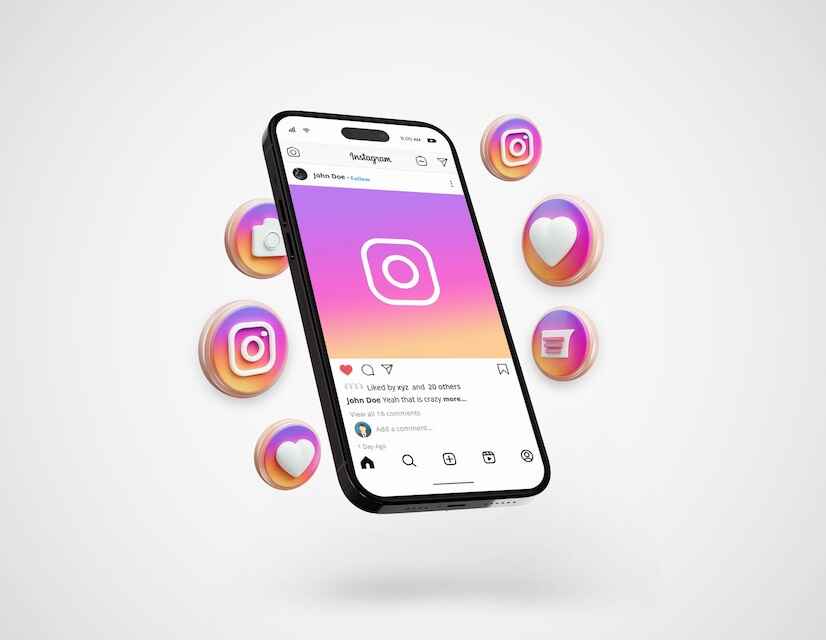-

Why LinkedIn can be a Good Platform for Brand Growth and Reach?
December 25, 2024 -

What are Some Good Zoho Alternatives?
December 22, 2024 -

How to get social media reviews?
December 20, 2024 -

Is It Possible to Automate Twitter (X)?
December 14, 2024 -

How to Find Good Instagram Notes Ideas
December 08, 2024

3 Easy Ways to Create Content for LinkedIn
Looking to boost your professional image on LinkedIn? You've come to the right spot. We'll show you three simple ways to make content that grabs your network's attention and grows your business.
LinkedIn is a top spot for professionals to share their skills, meet others, and stand out in their field. But making great content for it can be tough. That's why we're here to give you the tips and tools you need to succeed.
So, why is making content for LinkedIn so key? It's all about professional networking and how it can help your business goals. By sharing valuable, interesting, and engaging content, you can build your professional image, make real connections, and achieve real results for your company.

Key Takeaways
- LinkedIn is a powerful platform for professional networking and content sharing
- Crafting engaging content can help you establish your expertise and grow your business
- Leveraging the right tools and strategies can make content creation a breeze
- Measuring the performance of your LinkedIn content is crucial for refining your approach
- Consistency and a commitment to providing value are key to successful LinkedIn content
Understanding LinkedIn's Content Ecosystem
As social media and office professionals, we see LinkedIn's power in networking and business growth. To use it fully, we must grasp its unique content world.
The Power of Professional Networking
LinkedIn excels at making real connections. It lets us build and grow our professional networks. By sharing LinkedIn content, we show our skills, connect with others, and build relationships that help our careers and businesses.
Why LinkedIn Content Matters for Business Growth
In today's digital world, LinkedIn content is key for businesses. It helps us reach and connect with our audience, show our expertise, and grow our business through leads and brand awareness.
Key Content Types That Perform Well
- Thought-provoking industry insights and analysis
- Personalised success stories and case studies
- Educational content that addresses pain points and offers solutions
- Engaging videos, infographics, and visual content
- Curated content that offers value to your network Knowing what content works on LinkedIn helps social media professionals and office professionals create a strategy. This strategy showcases their skills and boosts engagement.
LinkedIn content types

Essential Tools for Creating LinkedIn Content
Creating engaging LinkedIn content can be tough and time-consuming. Luckily, many powerful tools help us make the process easier. These tools help us create content that really makes an impact on LinkedIn.
A key tool for us is a writing assistant like Grammarly or Hemingway App. These tools check our writing for mistakes and make it clear and easy to read. They use AI to suggest better words and sentence structures, making our posts connect with our audience.
For making great visuals, Canva and Adobe Spark are top choices. They let us create professional-looking images and graphics quickly. These visuals make our posts pop in the busy LinkedIn feed.
To schedule and share our content, Buffer, Hootsuite, and Sprout Social are great. They help us plan and share our content at the right times. This keeps our LinkedIn presence steady and strategic.
For checking how our content does, LinkedIn Analytics and Google Analytics are essential. They show us how people interact with our posts. This info helps us improve our content and get better results.
With the right tools, we can boost our LinkedIn presence and connect with our network. We can also drive real results for our business or personal brand.
content creation tools
"The right tools can make all the difference in creating high-performing LinkedIn content." Creating Engaging Content for LinkedIn Making great content is key to grabbing your LinkedIn audience's attention. We'll look at three main ways to make your LinkedIn content stand out.
Writing Compelling Headlines
Your headline is the first thing people see. It's vital to make a good first impression. Write headlines that grab attention and show the value of your content.
Use action words, talk about problems, or hint at interesting insights. This will make people want to click and read more.

Crafting Story-Driven Posts
Good LinkedIn content tells a story, not just lists what you do. Share personal stories, industry tips, or case studies that touch your audience's hearts. Create a story that teaches, inspires, or entertains.
This way, you build a stronger connection with your followers.
Incorporating Visual Elements
Visuals make your LinkedIn posts pop in a busy feed. Use great images, infographics, or short videos to make your message stronger. Pick visuals that match your brand and add to your text.
By using these tips for creating engaging content for LinkedIn and other social media platforms, you'll grow a strong content strategy. This will help your business succeed.
| Headline Strategies | Story-Driven Posts | Visual Elements |
|---|---|---|
| Action-oriented words | Personal anecdotes | Images |
| Address pain points | Industry insights | Infographics |
| Tease insights | Case studies | Short videos |
Best Practices for Content Distribution

As social media experts, we understand the importance of effective content distribution. It's crucial for the success of our LinkedIn strategy. By following these best practices, we can share our valuable insights and thought leadership with the right people.
Optimize Posting Times
Timing is everything on LinkedIn. Studies show the best times to post are mid-week, during business hours. This is when our audience is most active. We'll try different times to find what works best for our followers.
Leverage Relevant Hashtags
Using relevant hashtags in our LinkedIn posts can greatly increase visibility. We'll find and use industry-specific and trending hashtags our audience follows. This way, our content will show up in their feeds.
Amplify Through Our Network
Our LinkedIn network is a powerful tool for content distribution. We'll ask our colleagues, partners, and connections to share and engage with our posts. This will help us reach more people. By engaging with their content too, we'll strengthen our relationships.
"Effective content distribution is the key to unlocking the full potential of your LinkedIn strategy."
By using these best practices, we can make sure our social media professionals, content distribution, and LinkedIn strategy reach the right people. This will drive engagement and help our business grow.
Measuring Your LinkedIn Content Performance
As social media strategists, we know how crucial it is to watch our LinkedIn content closely. We track important metrics and use analytics tools to learn more. This helps us improve our strategy and make our content more effective.
Key Metrics to Track
We pay attention to a few key metrics for our LinkedIn content success. We look at likes, comments, and shares to see how our audience interacts with us. We also check impressions and reach to see how far our content goes.
Analytics Tools and Features
LinkedIn has great analytics tools that we use to understand our content better. We use the content analytics dashboard to track important metrics and find out which posts do well. This helps us decide what content to make and when to share it.
Adjusting Your Strategy Based on Data
By studying our content's performance, we can always make our strategy better. We use the data to see what our audience likes most. Then, we adjust our content and when we share it to better connect with our audience. This way, we keep delivering value and growing our LinkedIn presence.
FAQ
What are the key benefits of creating content for LinkedIn?
Creating and sharing content on LinkedIn helps us grow our business and build our personal brand. It makes us seen as experts in our field. We can connect with the right people and engage with our audience.
What are the most effective types of content for LinkedIn?
Top content types include thought-leadership articles and industry insights. Employee spotlights and behind-the-scenes looks are also great. Visual content like infographics and videos grabs attention well.
What tools can we use to streamline our LinkedIn content creation process?
There are many tools to help with LinkedIn content. Grammarly and Canva are good for writing and design. Buffer and Hootsuite help schedule posts. Google Analytics and LinkedIn's analytics tools track performance.
How can we write compelling headlines for our LinkedIn posts?
Writing great headlines is key for engagement. Use numbered lists and questions to grab attention. Highlight unique insights and use industry keywords. Keep headlines short and easy to scan.
What are the best practices for distributing our LinkedIn content?
To get the most out of our content, use hashtags and tag connections. Share at the best times for your audience. Repurpose content on other platforms and ask your network to share and engage.
How can we measure the performance of our LinkedIn content?
LinkedIn's analytics tools track important metrics like impressions and engagement. Use Google Analytics for deeper insights. Regularly check these metrics to improve your content strategy.
Comment